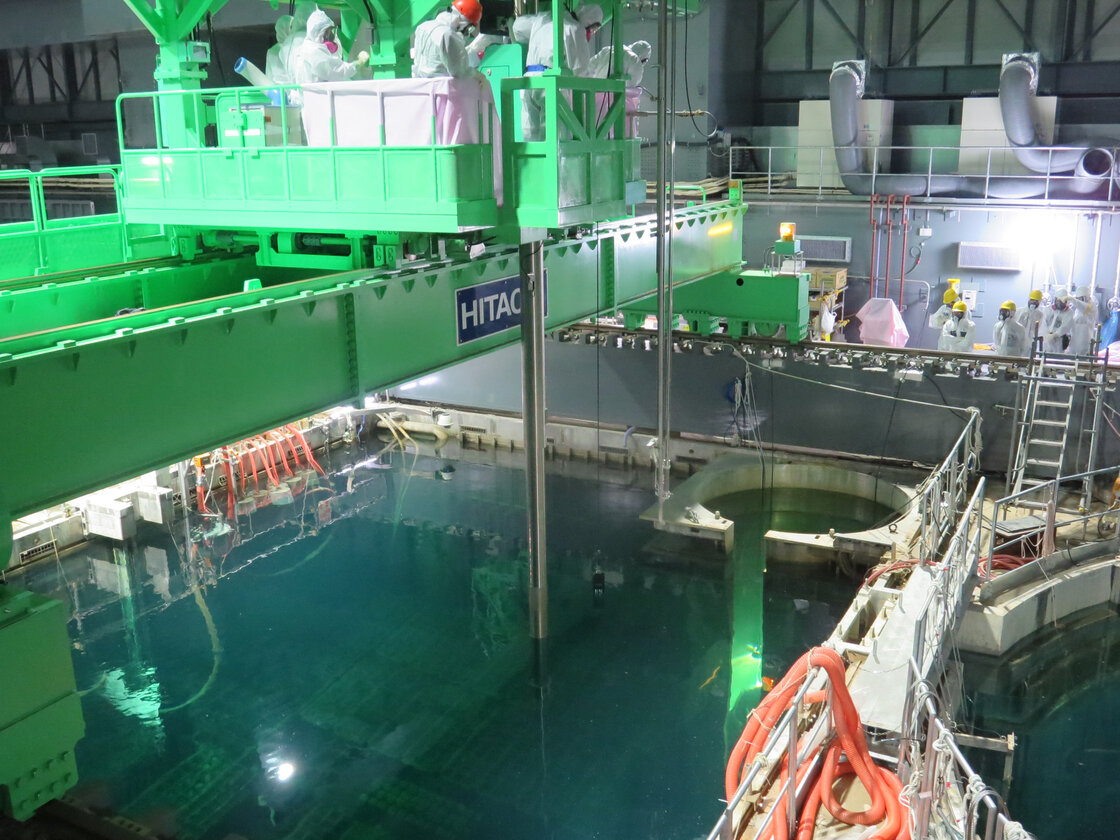asiatimes | Experts are unanimous that the engineering challenges are on a scale
unseen to date, given that the fuel pool was damaged in a fire caused by
a cooling failure and a subsequent explosion during the meltdowns. If
the fuel rods, some of which may be damaged, come too close to each
other, there is a chance that the nuclear chain reaction would resume, which would be catastrophic in the
presence of so much fissile material, as well as extremely difficult to
stop.
chain reaction would resume, which would be catastrophic in the
presence of so much fissile material, as well as extremely difficult to
stop.
If, on the other hand, a fuel rod breaks or is exposed to air and ignites, this would release into the atmosphere a massive amount of radiation, likely necessitating the evacuation of the plant. The total amount of radiation present in the pool is estimated at 14,000 times that released by the atomic bomb dropped at Hiroshima, or about the same as in the combined cores of the three reactors that melted down.
"[F]ull release from the Unit-4 spent fuel pool, without any containment or control, could cause by far the most serious radiological disaster to date," states The World Nuclear Industry Status Report 2013, compiled by two independent nuclear energy consultants. [1]
In several recent interviews with different media, Arnie Gundersen, a former nuclear industry executive and chief engineer of the Fairewinds Energy Education non-profit, cautioned that there was no system to stop a nuclear chain reaction, if one should occur, at the pool, and recommended that the operators "throw all sorts of boron into the water" (boron captures neutrons and slows down chain reactions) before they start pulling the rods out.
"I ran a division that built fuel racks, and these high density fuel racks like they have at Fuksuhima are very close to going critical anyway. ... Normally its 0.95, and it can get as high as 0.99; that means there’s a 1% margin before a self-sustaining chain reaction can occur." [2]
Gundersen said in a separate interview with Radio Ecoshock, expressing his opinion that the Japanese government rather than Tokyo Electric Power Company (TEPCO), the plant’s operator, should take charge of the operation: "I suspect come November-December-January we are going to hear that the building has been evacuated, they broke a fuel rod, the fuel rod is off-gassing, we have to wait a couple of days and then go back in." [3]
But even the most vocal critics of TEPCO’s and Japan’s response to the crisis so far acknowledge that the fuel has to be removed because the danger of doing nothing far outweighs the dangers of doing something wrong.



0 comments:
Post a Comment